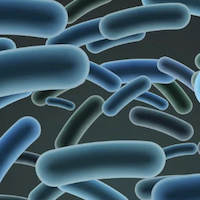Identification and serotyping of Listeria monocytogenes, isolated from various salmon products, sold in retail market in Lithuania

Submitted: 8 September 2020
Accepted: 6 July 2021
Published: 29 September 2021
Accepted: 6 July 2021
Abstract Views: 676
PDF: 277
HTML: 15
HTML: 15
Publisher's note
All claims expressed in this article are solely those of the authors and do not necessarily represent those of their affiliated organizations, or those of the publisher, the editors and the reviewers. Any product that may be evaluated in this article or claim that may be made by its manufacturer is not guaranteed or endorsed by the publisher.
All claims expressed in this article are solely those of the authors and do not necessarily represent those of their affiliated organizations, or those of the publisher, the editors and the reviewers. Any product that may be evaluated in this article or claim that may be made by its manufacturer is not guaranteed or endorsed by the publisher.
Similar Articles
- Dhary Alewy Almashhadany, Sarhang Hayyas Mohammed, Shaymaa Farooq Mala, Mohammed Naji Ahmed Odhah, Asaad Abdel Jalil Ahmood, Frequency, serotyping, antibiogram, and seasonality of Salmonella isolated from red meat markets , Italian Journal of Food Safety: Vol. 13 No. 3 (2024)
- Anna Mureddu, Roberta Mazza, Federica Fois, Domenico Meloni, Roberto Bacciu, Francesca Piras, Rina Mazzette, Listeria monocytogenes persistence in ready-to-eat sausages and in processing plants , Italian Journal of Food Safety: Vol. 3 No. 1 (2014)
You may also start an advanced similarity search for this article.

 https://doi.org/10.4081/ijfs.2021.9341
https://doi.org/10.4081/ijfs.2021.9341



